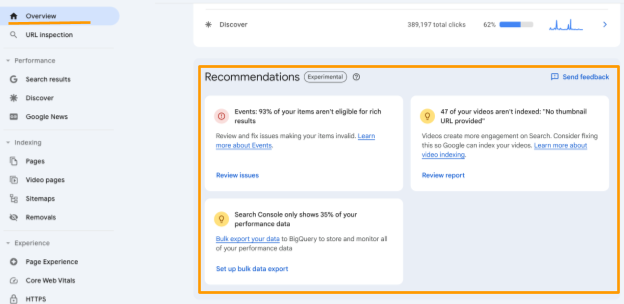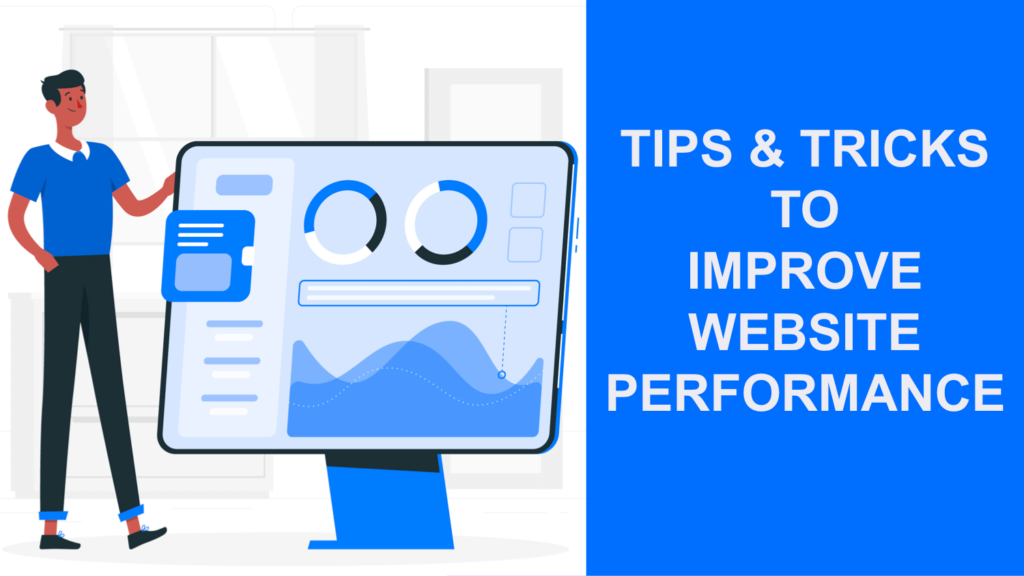In the ever-evolving world of digital marketing, staying on top of improve website performance is crucial. One of the most powerful tools at your disposal is Google Search Console. But what exactly is it, and how can you leverage its insights to boost your online presence and improve the website performance? Let’s read more.

What is Google Search Console?
Table of Contents
Google Search Console is a free tool offered by Google that helps you monitor, maintain, and troubleshoot your site’s presence in Google Search results. It provides valuable insights into how Google sees your site and how users interact with it through search and its boost the website performance. For Experience Search Engine Optimizations Services to improve website performance
Key Features of Google Search Console
- Performance Reports: See how your site performs in search queries. This includes data on impressions, clicks, click-through rates (CTR), and your site’s average position in search results. Understanding these metrics helps you identify what’s working and where you can improve.
- URL Inspection Tool: This feature allows you to check the indexing status of a specific URL on your site. It provides insights into how Google crawls and indexes your pages, helping you fix any issues that may prevent your pages from appearing in search results.
- Coverage Reports: These reports show which pages on your site are indexed, and highlight any indexing issues. This helps you understand which pages are discoverable by Google and which are not, enabling you to take corrective actions if needed.
- Sitemaps and Crawling: Submit your sitemap to ensure Google can easily find and index all your important pages. The crawling reports will help you monitor how Google is crawling your site and if there are any errors you need to fix.
- Mobile Usability: As mobile browsing has surpassed desktop, ensuring your site is mobile-friendly is crucial. Google Search Console will alert you to any mobile usability issues that could affect your site’s performance on smartphones and tablets.
- Security Issues and Manual Actions: Get notifications if Google detects any security issues like malware or if your site has been hit by a manual penalty. Addressing these issues quickly can prevent your site from being removed from search results.
How Google Search Console Can Improve Website Performance
Google Search Console is more than just a tool for monitoring your website; it’s a gateway to enhancing your site’s performance in search results. Google Search Console can significantly improve your website performance by taking
1. Identifying and Fixing Indexing Issues
One of the first steps to improving website performance is ensuring that all your important pages are indexed by Google. The Coverage Report in Google Search Console highlights pages that are indexed and flags those with issues to boost the website performance such as:
- Errors: Pages that couldn’t be indexed due to issues like server errors or redirects.
- Warnings: Pages that are indexed but have potential issues, like “indexed but blocked by robots.txt.”
- Excluded: Pages that Google intentionally left out of the index, possibly due to noindex tags or duplicate content.
By fixing these issues, you ensure that more of your valuable content appears in search results, which can boost visibility and traffic.
2. Enhancing Mobile Usability
With the rise of mobile browsing, ensuring your site is mobile-friendly is crucial. The Mobile Usability Report in Google Search Console identifies to improve website performance issues such as:
- Text too small to read.
- Clickable elements too close together.
- Content wider than the screen.
Resolving these issues improves the mobile user experience, which can lead to higher engagement and lower bounce rates, positively impacting your rankings.
3. Optimizing for Search Performance
The Performance Report provides insights into how your site is performing in Google Search. Key metrics include:
- Impressions: How often your site appears in search results.
- Clicks: The number of times users clicked through to your site.
- Average Position: Your site’s average ranking for specific queries.
- Click-Through Rate (CTR): The percentage of impressions that resulted in clicks.
Analyzing this data helps you identify high-performing keywords and pages, as well as those that need improvement. For example, if a page has a high number of impressions but a low CTR, you might need to refine its meta title and description to make it more enticing.
4. Improving Site Speed and Core Web Vitals
Google Search Console provides insights into your site’s Core Web Vitals, which are a set of metrics related to speed, responsiveness, and visual stability. These include:
- Largest Contentful Paint (LCP): Measures loading performance.
- First Input Delay (FID): Assesses interactivity.
- Cumulative Layout Shift (CLS): Evaluates visual stability.
Improving these metrics can lead to a better user experience, which is increasingly important for search rankings. Addressing issues like slow loading times or layout shifts can reduce bounce rates and keep users engaged longer.
5. Resolving Security and Manual Penalties
Google Search Console alerts you to security issues like malware or hacking attempts, and manual penalties that Google might impose if your site violates its guidelines. Resolving these issues promptly is crucial because they can severely impact your site’s performance in search results. By maintaining a secure and guideline-compliant site, you safeguard your website’s visibility and reputation.
6. Monitoring and Enhancing Link Building
The Links Report in Google Search Console shows which sites are linking to yours and what content they’re linking to. This helps you:
- Identify high-quality backlinks that can boost your domain authority.
- Spot any low-quality or spams links that might harm your site’s reputation.
- Understand which content is resonating most with external audiences.
By analyzing this data, you can refine your link-building strategy to focus on acquiring more high-quality backlinks, which are crucial for improving search rankings.
7. Submitting Sitemaps for Better Crawling
Submitting an updated XML sitemap via Google Search Console ensures that Google knows about all the pages on your site. This is particularly important for new sites, sites with a lot of content, or sites with complex structures. It helps Google crawl and index your pages more efficiently, which can lead to faster updates in search results.



